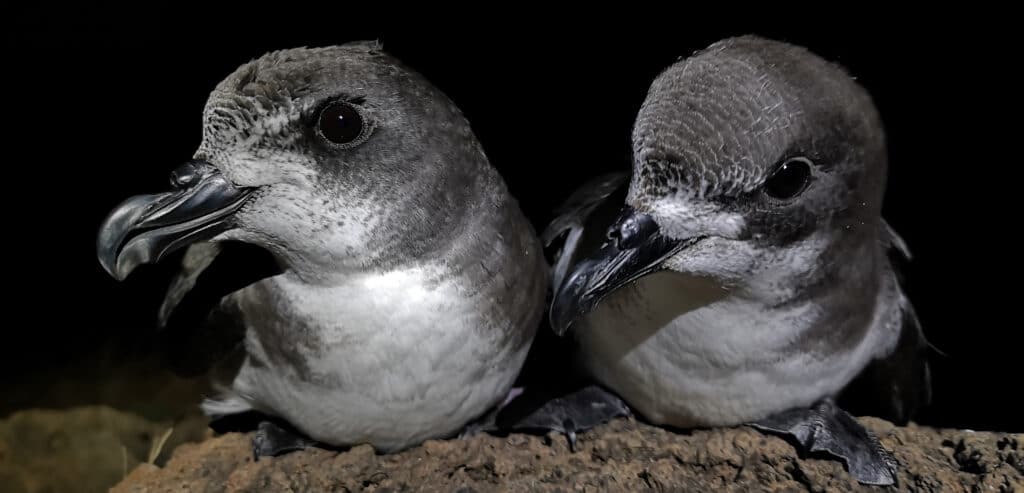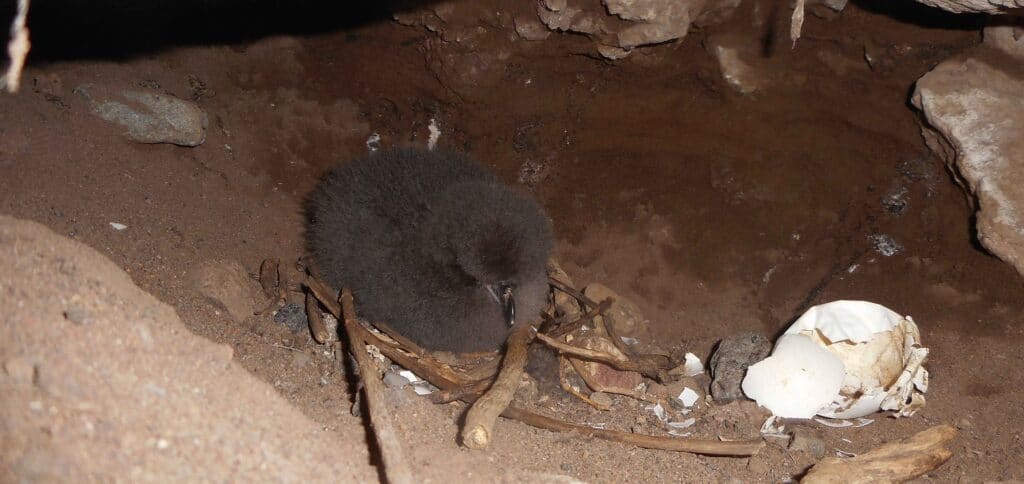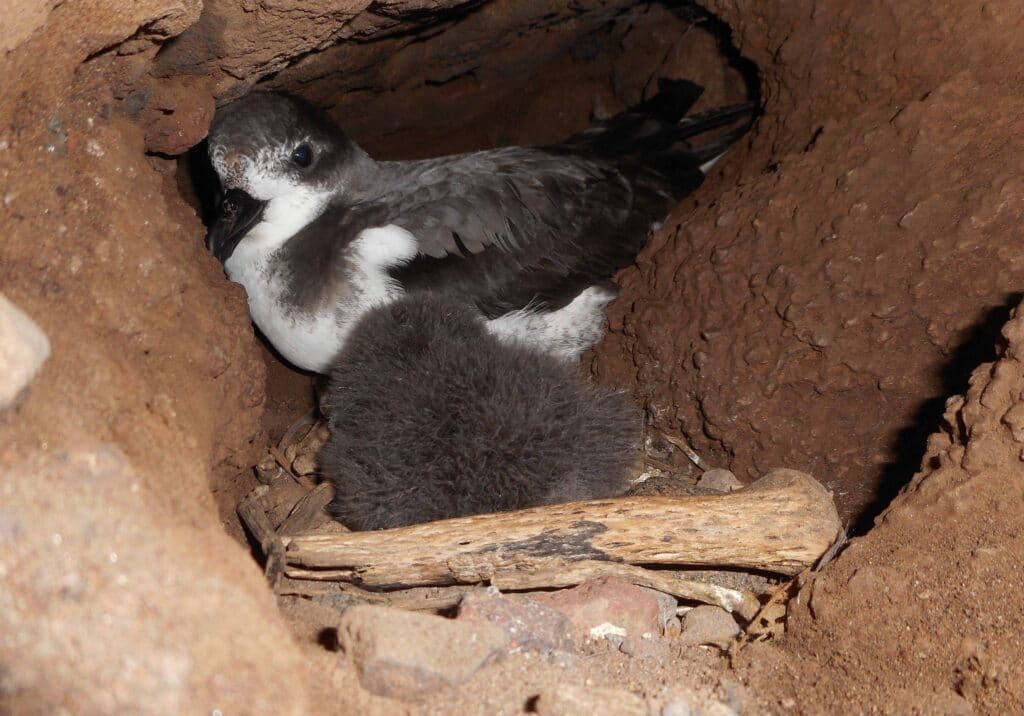Get into a Cape Verde petrel’s nest!

Watch live as a fluffy little Gongon petrel chick grows up and lives in the safety of its nest in Cape Verde until it flies away!
By Elena Serra Sánchez
Cape Verde petrel’s (Pterodroma feae) chicks spend their first days of life sheltered in rock crevices on the Cape Verde Islands. For five months, they will wait patiently for nightfall for their parents to return to the nest and serve them a succulent dinner mainly based on small cephalopods and fish. With an estimated population of 1,000-2,000 individuals, the species is considered Near Threatened according to the IUCN Red List of Threatened Species
Now, thanks to the great efforts of Associação Projecto Vitó, the Barcelona University and MiraNature, we can look into a Gongon petrel nest in Fogo Natural Park in Cabo Verde and watch in real-time everything that happens to a Cape Verde petrel chick during the nesting period and follow all its movements until it leaves the nest as a fully-fledged adult.
Fea’s petrel or Gongon Petrel -as it is known by locals- is a seabird species endemic of Cabo Verde, so it does not reproduce anywhere else in the world. They are fast and agile fliers that typically fly in slanting arcs in moderately windy conditions. The birds spend most of their lives in oceanic waters, venturing onto land only to breed between September and June.
Cape Verde petrels are monogamous, with male and female pairs bonding for life. The species lays only one egg per year and both males and females share the incubation tasks that last approximately 50 days. After egg hatching, which usually occurs between late February and early March, the parents visit the nest at night to feed the young Gongon until it is ready to set out to sea, which happens between May and June.

Despite of being an emblematic species in Cabo Verde, little is known about it, due to its secretive behaviour of coming to land only at night and because it breeds in hidden burrows in rocky crevices at high altitude mountains difficult to access of Santo Antão, Fogo, São Nicolau and Santiago islands. However, it is known that their populations have been severely decimated over the last centuries. As these petrels breed in areas also used by rural communities they are exposed to several threats on land, such as cat and rat predation, human harvesting, habitat loss and light pollution, but at sea they are also likely to be threatened by bycatch in fishing gears, habitat alteration and marine pollution.
Coordinated by BirdLife International, the Cabo Verde Seabird project aims at determining the main foraging areas of this species, the size and viability of their populations, the impact of main threats in each island and the most adequate conservation measures to protect and guarantee the viability of this endemic seabird. Therefore, one critical activity is to identify the nesting areas of this species to minimize the threats to which it is exposed. To this end, huge efforts have been made tolocate the maximum number of Cape Verde petrel nests.
“Searching the Cape Verde petrel nests it is not an easy task due to their location in places difficult to access”, highlights Herculano Andrade Dinis, Executive Director at Associação Projecto Vitó. Still, the technicians of this local organization, together with the University of Barcelona, managed to identify more than 100 nests in 2020. “The search for nests is done based on questionnaire analysis that were carried out in all the islands where the species reproduces, working in close partnership with farmers and communities who provide us useful information on the courtship and breeding areas of this bird. In addition, we have the priceless support of Africa, a female sniffer dog trained to find petrels nests”, explains Dinis.

Installed by MiraNatura, Gongon Petrel Livecam aims to give to everyone and specially to the local communities of Cabo Verde a glimpse into the life of this endemic and emblematic species. “We believe that Livecam will enable people to begin to appreciate seabirds, engage in promotional activities and support conservation work. We are preparing to disseminate this activity to primary and secondary schools”, adds Dinis.
In addition, all the images captured will also serve to understand the reproductive biology of the Cape Verde petrel and the interactions that occur in the nests, serving as a basis for the development of future studies.
We invite you to take check the Gongon Petrel Livecam and watch on live the daily life of a Gongon chick and follow it as it grows up until it leaves the nest!
——
The Project Conservation of Seabird in Cabo Verde is funded by MAVA Foundation, coordinated by BirdLife International and developed thanks to the collaboration between several local and international NGOs and institutions (Direção Nacional do Ambiente de Cabo Verde, Biosfera, SPEA, Projecto Vitó, Projeto Biodiversidade, Fundação Maio Biodiversidade, BIOS.CV, INIDA, Amigos do Calhau, Lantuna, and Cabo Verde, Coimbra and Barcelona universities).
“Searching the Cape Verde petrel nests it is not an easy task due to their location in places difficult to access”Herculano Andrade Dinis, Executive Director at Associação Projecto Vitó